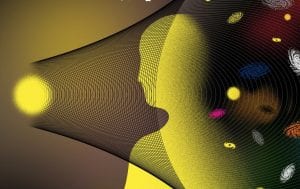
Here are brief descriptions of some recent/current research directions. A more complete overview, as well as more details, can be found by browsing my recent publications. A summary of highlights of previous research can be found here.
The cosmic microwave background and the early Universe. I have a longstanding interest in developing new ways to analyze and understand measurements of cosmic microwave background (CMB) fluctuations and their implications for early-Universe scenarios. In recent years, I have become increasingly interested in kinetic-Sunyaev-Zeldovich (kSZ) tomography, which combines galaxy-survey and CMB data to allow a reconstruction of the three-dimensional mass distribution.
The epoch of reionization and 21-cm fluctuations. A number of experimental efforts to detect the 21-cm signal from neutral hydrogen from the epoch of reionization (EoR) will soon bear fruit, and subsequent years will bring detailed maps of the intensity fluctuations of this EoR signal. My collaborators and I have been studying the EoR and also developing novel uses for these forthcoming 21-cm intensity maps. Examples include novel ways to constrain dark-matter properties; ways to use 21-cm fluctuations to search for magnetic fields and primordial gravitational waves; and ways to study clusters and voids with 21-cm maps.
Dark matter. One of my longstanding interests involves the quest to understand the nature of dark matter that resides in galactic halos, including the halo of our own Milky Way. My collaborators and I are thinking about weakly-interacting massive particle dark matter, axions and axion-like particles, primordial black holes, and other dark-matter candidates. We are studying an assortment of techniques to detect different dark-matter candidates and developing novel ways to constrain dark-matter properties with astronomical measurements.
Dark energy and early dark energy. Likewise, I am also interested in the dark energy that is causing an accelerated cosmic expansion rate. We are investigating observational avenues to constrain the properties of dark energy, and we are also studying the prospect to seek dark-energy–like fields in the early Universe. I have also been studying (and our group originated) the idea that the Hubble tension may be resolved by early dark energy.
Statistical isotropy and homogeneity, cosmic parity, the CMB, and galaxy clustering. The standard assumption, and prediction of the simplest inflationary models, is that the statistical properties of primordial perturbations are the same everywhere in space and in every direction. The default assumption is also that the physics that describes the large-scale properties of the Universe is parity conserving. However, these are assumptions, or prediction, that can, and should, be tested quantitatively. My collaborators and I have been studying an array of measurements that can be done with the cosmic microwave background and the galaxy distribution to develop tests along these lines.
Line intensity mapping. The primary way we learn about the distribution of mass in the Universe is by mapping the distribution of galaxies. Intensity mapping, however, provides an alternative. Intensity-mapping experiments map the distribution of light from a large number of unresolved galaxies. By using light associated with a strong molecular emission line, of known rest-frame frequency, intensity mapping can determine the 3d distribution of mass. A number of surveys are now getting under way to map the distribution of emissivity from carbon-monoxide (CO) lines, singly-ionized carbon lines, Lyman-alpha lines, and other emission lines. My collaborators and I have been studying strategies to optimize such surveys, ways to mitigate foregrounds, and what can be learned about cosmology from such measurements. We have also studied prospects to learn about galaxy evolution by, for example, inferring the star-formation history from such measurements.
Gravitational waves. I have been interested in a number of questions related to gravitational-wave astrophysics. Much of my work has been focussed on the stochastic gravitational-wave background, and I have recently become particularly interested in what we can learn about these backgrounds with pulsar timing arrays. Other interests include gravitational lensing of gravitational waves, and exotic sources of gravitational waves.
updated 8 May 2023
